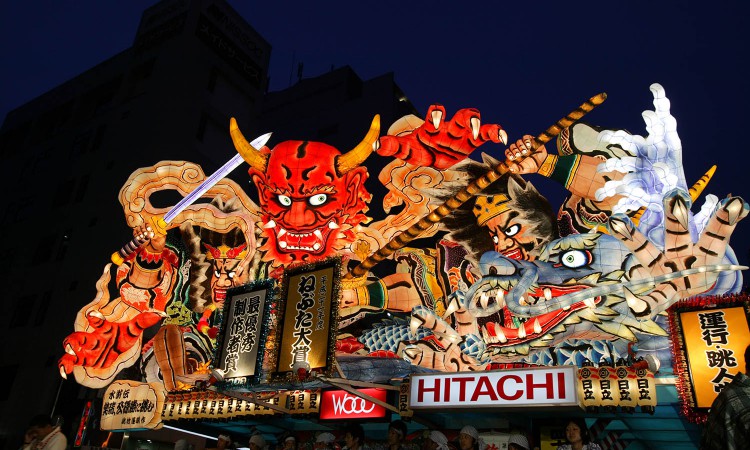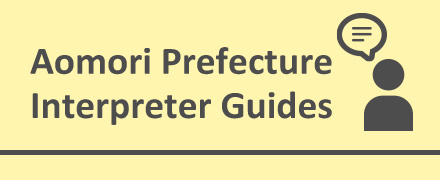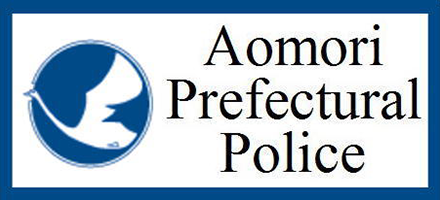
Aomori is a showcase for ancient Jomon culture, one of the earliest in the world with pottery. Prehistoric Japan stands out from the rest of the world. With a unique Jomon culture, people lived in harmony with nature as hunger-gatheres for more than 10,000 years, using only earth, wood and stone.
The global climate was warmer than it is now, and Aomori offered abundant fish from the sea, nuts and animals in the forests. People thrived, making pottery as early as 14,400 BC. Their unique culture has recently started to receive international recognition including consideration for listing as a World Cultural Heritage.
Aomori boasts many archaeological finds from the Jomon era, including the remains of ancient villages, mysterious large-scale stone circles as well as some of the earliest earthenware in human history. Excavated earthenware ranges from elaborate vessels to mysterious Dogu clay figurines. Four hours from Tokyo by bullet train, you can see those wonders with your own eyes.
1. Sannai-Maruyama Archaeological Site
Sannai-Maruyama site is an archaeological site of a large-scale settlement which thrived approximately from 3,500 BC and suddenly ended around 2,000 BC. It is one of the largest remains of a settlement from the Jomon era in Japan.
Hundreds of people are thought to have lived here at the height of the community. Archaeological finds include more than 800 sites of pit houses, as well as shell mounds and burial sites. In the almost 40ha/95acre property, you can see reconstructed pit houses, raised-floor storage houses, a long house (32m/105ft in length) and a structure of six massive pillars.
There is also an exhibition center of excavated pottery and stonework. There you can borrow a tablet, an “IT Guide”, to read descriptions of objects in English or experience the VR version of the site and objects. English-speaking guides are available (Reservation required). The site is 13 minutes from Shin-Aomori Station of Tohoku Shinkansen by shuttle bus, or 30 minutes by taxi from the Aomori Airport.
Point of Interest 1―Six Massive Pillars
Remains of six massive pillars were found at the site. Those pillars were made of chestnut tree and estimated to be as high as 14.7m/48ft. They are reconstructed next to the exca-vation site. You can also see the actual remains, the bases of the pillars, in the reservation dome nearby. We do not know the purpose of this construction yet. There are various theories by archaeologists, including watchtower, shrine, light house or timber circles.
Replica of what is left of the chestnut tree used for the pillars
Point of Interest 2―“Burial” Site for Pottery
One of the important discoveries at the Sannai-Maruyama site is an earth mound which contained fragments of pottery and stonework. It looked like just heaps of earth at first glance, but a series of excavation revealed a great number of ritual instruments such as large jade beads and Dogu figurines. It is now considered to be a burial site for things of importance, as Jomon people believed in animism and thought spirits dwelled in all things. The trench used for excavation is open to public and you can see the profile of the mound that comprises of various artifacts.
Point of Interest 3―Working Excavation Site
The excavation of the Sannai-Maruyama site began in 1992 and still continues in the surroundings of the park. The site is so vast and the number of artifacts so large, we do not know when it will be completed. On weekdays, if the weather is good, you can visit the actual site of excavation
Excavation at Sannai-Maruyama is still going on
Point of Interest 4―Various Workshops
Various workshops are held every day. Themes include making pottery, clay figurines or amber pendants. Registrations are open at the information desk of the park in the morning. Workshops start at 13:00 and are for 30 minutes to 2 hours. The fees are from JPY 220 to 1080 (as of September, 2018).
Scenes from the workshop
In the Vicinity 1―Aomori Museum of Art
The collection includes works and installations by Japanese modern artists including Yoshitomo Nara. Established in 2005, the museum boasts its modern architecture by Jun Aoki, which was inspired by the Sannai-Maruyama site. You can also visit the café and the shop in the museum. A 9 minute walk from the Sannai-Maruyama site.
Aomori Museum of Art and “Aomori Dog” by Yoshitomo Nara
In the Vicinity 2―Aomori Prefectural Folk Museum
It is a folk museum of Aomori prefecture, housed in a refurbished building which used to be headquarters of the Aomori Bank. The museum has a collection of well-preserved Jomon earthenware, Dogu figurines and clay masks. English descriptions are available. It is a 20 minute ride by car from the Sannai-Maruyama site, or a 5 minute ride from Aomori station in the city center.
Clay figurines and other artifacts from the Fu-indo Collection
2. Komakino Stone Circle
One of the best-preserved stone circles from the Jomon period. It was built around 1,500 BC, later than the sudden disappearance of the large community of Sannai-Maruyama. It has a diameter of 35m/115ft. Each stone weighs around 10-20kg/22-44lb, carried up from the river, which is about 100m/330ft away below the hill. These stones are arranged in three circular rows. It is considered to have had religious meanings, but its specific purpose is unknown. The site is 20 minutes by car from the Sannai-Maruyama site (30 minutes from Shin-Aomori Station of Tohoku Shinkansen or 15 minutes from the Aomori Airport). On the hill, you can also get a beautiful view of the Mutsu bay.
Stone circles at Komakino Site
In the Vicinity―Komakino Site Preservation Museum, “Komakinokan”
This is a museum just below the hill of the Komakino site. The exhibition includes many pottery objects excavated from the Komakino site as well as other places in the Aomori city. All exhibits have English descriptions. The building of the museum is a refurbished old elementary school. They have workshops for children.
Exhibition room of the Komakinokan
3. Korekawa Jomon-kan
The museum exhibits various artifacts from the Jomon period and you can see the great craftsmanship of Jomon people.
The highlight of the collection is “Gassho Dogu” (a clay figurine with clasped palms, 1,500 BC), which has been recently registered as a national treasure by the Japanese government. You can also take a look at Jomon
lacquerware items still in brilliant red color, lacquered earthenware or stonework. It is a 20 minute ride by car from the Hachinohe station of Tohoku Shinkansen (on weekends or on national holidays, a direct bus from the station is available).
Gassho Dogu in the exhibition room
Point of Interest―Lacquerware and Lacquered Earthenware
Lacquerware is known to have originated in Japan, historically referred to as “Japan” in Europe. Korekawa Jomon-kan is famous for its collection of Jomon lacquerware and lacquered earthenware. It is hard to believe these lacquered combs, lacquered bamboo basketry or earthenware beautifully lacquered in red and black are from before the common era.
4. Kizukuri Station and “Karko”
The bones excavated from the Tagoyano shell mound
Shakoki-Dogu (1,000 - 900/300BC), the most famous type of Jomon clay figurines, was excavated from the Kamegaoka site in Aomori. Kizukuri station, the nearest station from the Kamegaoka site, is built with a huge statue of Shakoki Dogu on its facade. The station is 45 minutes by car from Shin-Aomori station. A 15 minute walk from the station will bring you to “Karko”, the Jomon era museum. The exhibition includes a bone of a woman from the Jomon period, Shakoki-Dogu (replica) and a reconstructed Jomon house.
Point of Interest―5,000 year-old bones of a woman
At “Karko”, you can see the bones of a woman from the Jomon period, which were discovered in a shell mound (prehistoric refuse heap of shells) near the Kamegaoka site. Since the Japanese soil type is acidic due to the pile of volcanic ash, it is rare to find a full ancient human skeleton intact to this day. Since she was buried on the bed
of numerous seashells, her bones were miraculously preserved by calcium, which allowed us to meet her after more than 5,000 years of time.
The bones excavated from the Tagoyano shell mound
Further Afield―Tsugaru Jomon-kan and the Kamegaoka Archaeological Park
The Kizukuri Kamegaoka Archaeological exhibition room, in Tsugaru Jomon-kan, exhibits fine artifacts and lacquerware as well as glass beads excavated from the neighboring area. There is no English description available, but you can see the local people’s affection towards their ancient culture. It is a 20 minute ride by car from “Karko”. A small park of the Kamegaoka archaeological site is also a 5 minute walk from here.
5. Notes
Sannai-Maruyama Archaeological Site (“Jomon Jiyukan” Jomon-no Oka, Sannai Mahoroba Park)
Address: 305 Maruyama, Sannai, Aomori-shi, Aomori prefecture, 038-0031
Tel: +81-(0)17-766-8282
Opening times: 9:00-17:00 (Apr 1 to May 31, Oct 1 to Mar 31)
9:00AM-18:00 (Apr 28 to May 6, Jun 1 to Sep 30)
Closed: Dec 30 to Jan 1
Admission: Free
Aomori Museum of Art
Address: 185 Chikano, Yasuta, Aomori-shi, Aomori prefecture, 038-0021
Tel: +81-(0)17-783-3000
Opening times: 9:30-17:00 (Oct 1 to May 31)
9:00-18:00 (Jun 1 to Sep 30)
Closed: Second and fourth Mondays, Year-end and New year holidays
Admission: JPY 510 for adults, JPY 300 for college or high-school students, JPY 100 for primary or middle school
students
Aomori Prefectural Folk Museum
Address: 2-8-14 Honcho, Aomori-shi, Aomori Prefecture, 030-0802
Tel: +81-(0)17-777-1585
Opening times: 9:00-17:00 (Apr 1 to Apr 27, Nov 2 to Mar 31)
9:00-18:00 (Apr 28 to Oct 31)
Admission: JPY310 for adults (JPY 250 in Jan/Feb), JPY 150 for college or high-school students (JPY 120 in Jan/Feb)
*Tickets for special exhibitions may have to be paid separately.
Komakino Stone Circle(Japanese language site)
Address: 41 Komakino, Nozawa, Aomori-shi, Aomori Prefecture, 030-0152
Opening 24 hours, every day
Admission: Free
(“Komakino-no Mori, Donguri-no Ie”, the observation center of the Komakino Site is open 9:00 to 17:00, Admission free,
Closed in winter)
Komakino Site Reservation Center (Jomon-no Manabiya, “Komakinokan”)(Japanese language site)
Address: 108-3 Sawabe, Nozawa, Aomori-shi, Aomori prefecture, 030-0152
Tel: +81-(0)17-757-8665
Opening times: 9:00-17:00
Closed: Dec 30 to Jan 1
Admission: Free
Korekawa Jomonkan (Hachinohe Archaeological Heritage Center)
Address: 1 Yokoyama, Korekawa, Hachinohe-shi, Aomori prefecture, 031-0023
Tel: +81-(0)178-38-9511
Opening times: 9:00AM-5:00PM
Closed: Mondays (except on first Mondays and national holidays), the day after national holidays (open if on Sat or
Sun), Year-end and New year holidays
Admission: JPY 250 for adults, JPY 150 for high-school or college students, JPY 50 for primary or middle school
students
Karko (Tsugaru Jomon Exhibit Center)(Japanese language site)
Address: 59-1 Wakamidori, Kizukuri, Tsugaru-shi, Aomori prefecture, 038-3138
Tel: +81-(0)173-42-6490
Opening times: 9:00-16:00
Closed: Mondays, the day after national holidays, year-end and new year holidays
Admission: JPY 200 for adults, JPY 100 for high-school or college students, JPY 50 for primary or middle school
students
Tsugaru Jomonkan (Kizukuri Kamegaoka Archaeological Exhibition Room)
Address: 195 Byobuyama, Tateoka, Kizukuri, Tsugaru-shi, Aomori prefecture, 038-3283
Tel: +81-(0)173-45-3450
Opening times: 9:00-16:00
Closed: Mondays (if a national holiday falls on a Monday, then the following day), year-end and new year holidays
Admission: Free




























